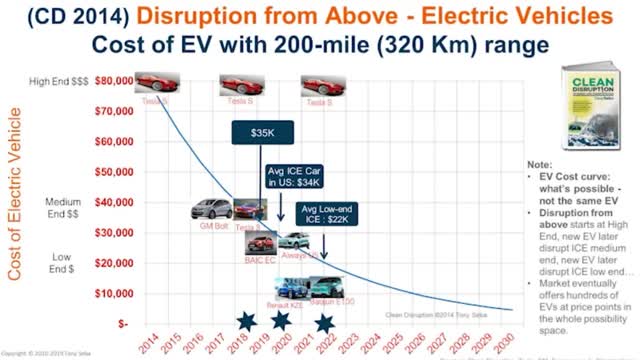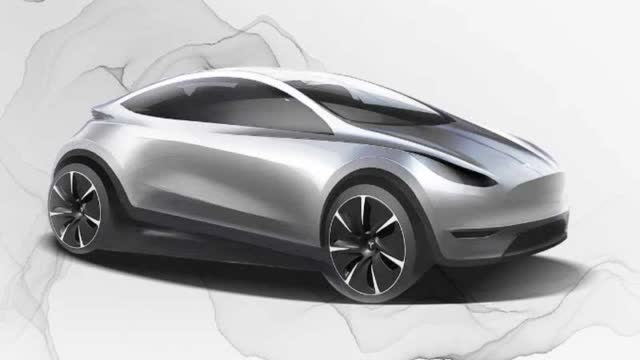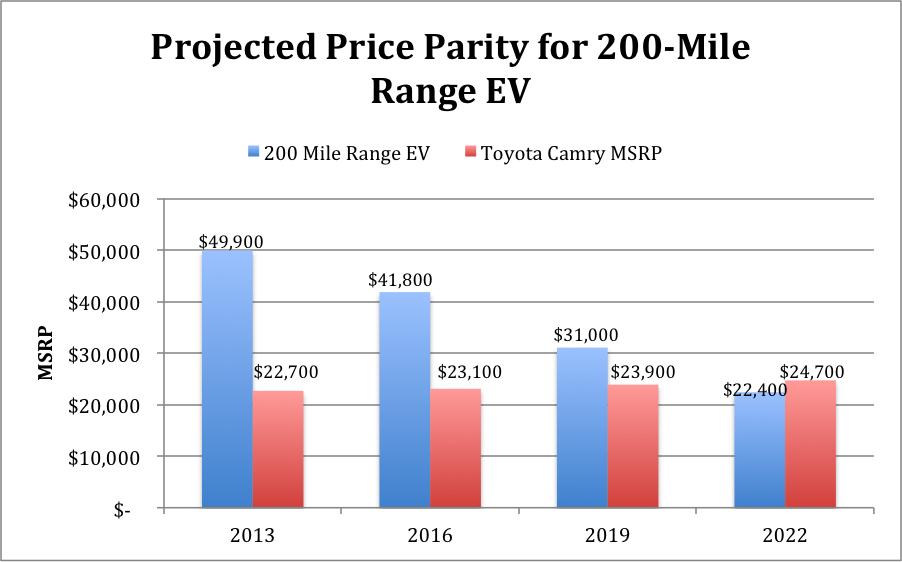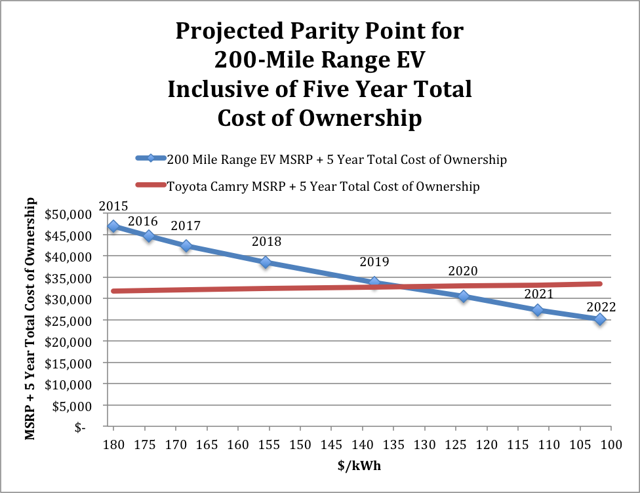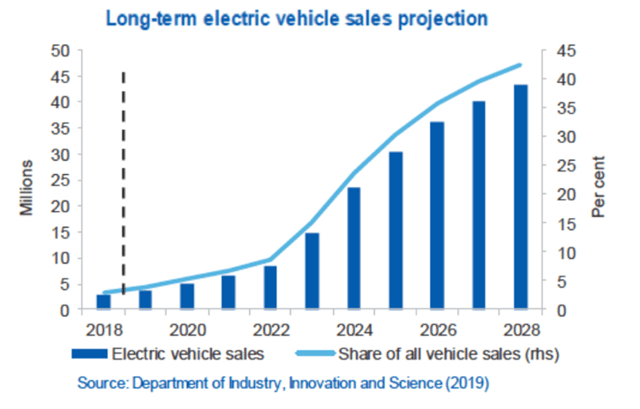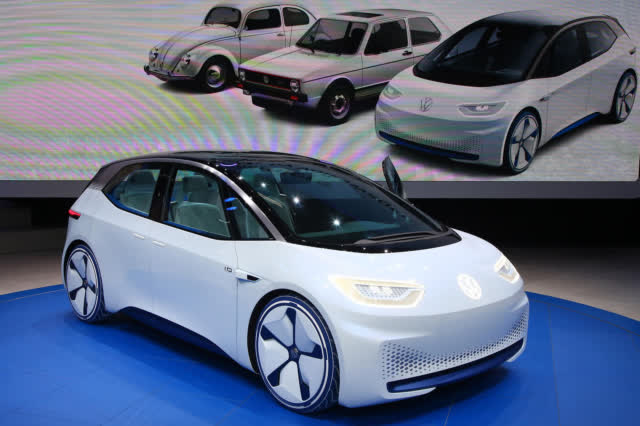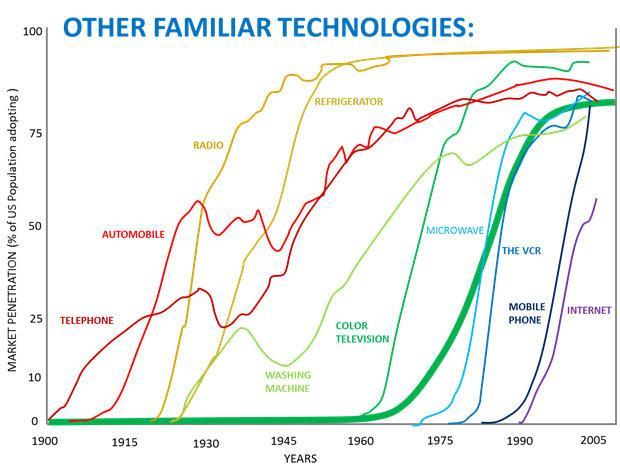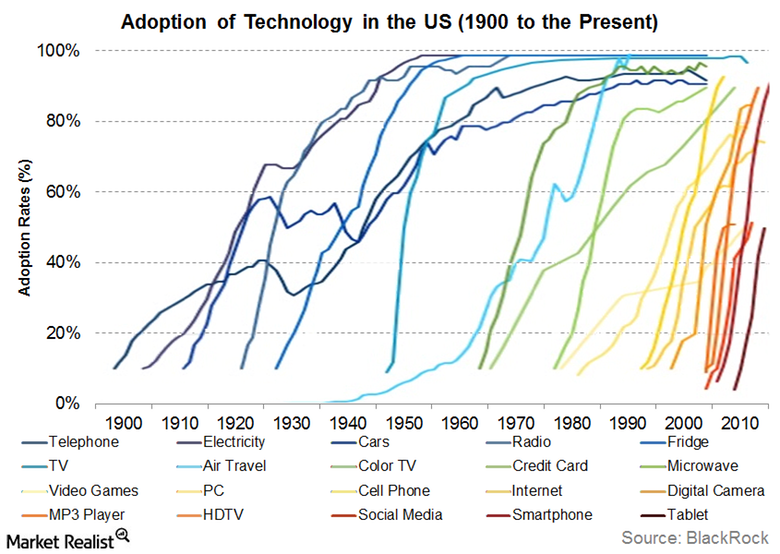The EV Disruption Will Really Take Off From End 2022
Investment advisor, portfolio strategy, growth at reasonable price(16,232followers)SummaryComparing forecasts when e-cars will reach purchase price parity with ICE cars.
What does this mean for electric car sales?
Disruptions are usually fast and follow the S curve.
I do much more than just articles at Trend Investing: Members get access to model portfolios, regular updates, a chat room, and more.Get started today »
Back in 2015, when I correctly forecast the Chinese EV boom in my article "Chinese Electric Vehicle Companies About To Boom", many were skeptical. Fast forward to 2020 and I repeat here my same forecast from the past several years:
The big EV boom will really take off from end 2022!
Note: The reason for end 2022 is because that is when lithium-ion batteries should have reached the magical USD 100/kWh mark. At that point, an electric car will be purchase price competitive (equal), and in future years cheaper, than a conventional [Internal Combustion Engine] car.
Comparing forecasts when e-cars will reach purchase price parity with ICE cars
Tony Seba's forecasts
As shown below in the Tony Seba chart, he forecasts a 200-mile range EV will be purchase price cost competitive to a conventional ICE car by 2022.
Source: Tony Seba:Future of Transportation/Keynote: 2020 NC DOT Transportation Summit (video)
My forecasts
My model below forecasts we will see lithium ion batteries pack selling prices below USD 100/kWh in 2022, essentially very similar to the Tony Seba forecast above. By end 2022, we should start to see this flow through to car prices, meaning, by end 2022, electric cars should be cheaper than ICE cars. This means, by end 2022, we should start to see electric cars being sold at USD 25,300 (assumes the car sells for $20,000 and the battery $5,300).
Lithium-ion battery selling prices to drop below USD 100 and reach ~USD 88/kWh by end 2022
Source: My own model
Assumptions
- Assumes an electric car uses a 60kWh battery pack.
- Assumes Li-ion battery prices fall at 16%pa. Once they reach ~USD 50/kWh, the falls may stall due to material costs etc.
Bloomberg's forecasts
A December 3, 2019, article by BNEF quotes:
Shanghai and London, December 3, 2019 – Battery prices, which were above $1,100 per kilowatt-hour in 2010, have fallen 87% in real terms to $156/kWh in 2019.By 2023, average prices will be close to $100/kWh, according to the latest forecast from research company BloombergNEF (BNEF).
An April 2019 article by Bloombergstated:
The crossover point, per the latest analysis, is now 2022 for large vehicles in the European Union.
By 2025, the battery will be only 20 percent of total vehicle cost.
Comparing the forecasts above
The above three forecasts are actually very similar:
- Tony Seba:By 2022,e-cars will hit parity with ICE (at $22K).
- Matt Bohlsen:By end 2022,e-cars will hit parity with ICE (at $25.3K).
- BNEF: Effectively,by 2023,e-cars will hit parity with ICE.
A Tesla Model 2 maybe next - ~USD $26,000 by end 2022 - Is possible based on my model
Note: "A $25,000 Tesla Model 2 Could Earn Elon Musk $37.5 Billion" quoting a previous employee suggests a Tesla Model 2 could be 10,000 cheaper than Model 3.
Other forecasts
- Deloitte: Global price parity by2022.
- JP Morgan: "(Battery) Prices are falling by 15-20% per annum as the scale of production ramps up and battery suppliers increasingly give away their margins. This puts China on track to produce EV and internal combustion engine technology at cost parity (for compact vehicles) by 2020......For EVs to be cost competitive with ICE vehicles, battery costs must fall to around $100/kWh, something that could be achievedby the middle of next decade (2025) or earlieraccording to J.P. Morgan Research estimates." JP Morgan also forecasts"38%global EV market share by 2025". "60%by 2030"
- McKinsey: Cost parity by‘early 2020s’will be electric vehicle tipping point.
- Ark Investment Management: Parity in2022, and perhaps before 2020 when also considering total running and maintenance costs.
Projected price parity for 200-mile range EV expected to hit in 2022
Source: Ark Investment Management.2022: The Year Electric Vehicles Leave Gas Cars In The Dust
"Incorporating the EV savings associated with lower maintenance and fuel costs, ARK anticipates that the crossover point will occur even sooner, perhaps before 2020, as is illustrated below."
Source: NADA Guides, ARK Investment Management LLC
What does this mean for electric car sales?
Assuming the above forecasts prove to be accurate and an electric car becomes purchase price comparable (equal) in 2022 or 2023, then the following should happen:
- Electric car sales should take off in post 2022 with massive growth as demand skyrockets. Electric car sales demand could exceed 100% pa growth.
- Demand for Li-ion batteries and key EV metals (lithium, cobalt, graphite, nickel, manganese, rare earths NdPr) to surge.
My electric car market share forecasts (a percentage of new car sales)
2019 2020 2021 2022 2023 2024 2025 2030 1 Share
2.5% 3.5% 5% 7% 10% 13% 16% 36% Assumptions: Post 2022 e-car sales to surge, but be limited by available batteries or raw materials. If the later was not a likely constraint, then e-car market share could climb even faster hitting ~50%+ by 2030.
In 2019, we saw electric car market share reach2.5%. My forecast above sees a 10x or more increase in electric car sales the next decade.
EV sales forecast to really take off after 2022 as affordability kicks in
The chart below aligns with my research that electric car sales will really take-off after 2022 when my model forecasts electric and ICE car price parity.
The forecast below shows an exponential sales increase post 2022
Volkswagen plans 27 electric cars by 2022
Disruptions are usually fast and follow the S curve
Modern day disruptions are taking place over shorter time periods
Further reading
- Tony Seba: Future of Transportation/Keynote: 2020 NC DOT Transportation Summit (video)
- Cathie Woods: Investing in disruptive innovation | SingularityU ExFin South Africa Summit
- China Plans To Target 25% Of Vehicle Sales To Be New Energy Vehicles By 2025
- The EV Boom Slowed In 2019 - An Update On The EV Boom Gets Bigger Series
- What To Expect For Electric Car Sales In 2020
- The Era Of The Truly Affordable Electric Car Is Finally Arriving Soon Helped By Renault
- Future electric cars: Upcoming battery-powered cars that will be on the roads within the next 5 years
- Every Electric Vehicle That's Coming in the Next 2 Years
Conclusion
My forecast of "The big EV boom will really take off from end 2022" which I made a few years ago seemed to many at the time as being a bit too optimistic. Fast forward to today and we are hearing more and more forecasts of EV/ICE cost parity being hit in 2022 or 2023.
For investors in the sector, this is of huge significance. 2022 is under 2 years away, and 2023 is under 3 years away. This means, in the next 2-3 years, the EV supply chain needs to be ready for a huge surge in sales. However, due to the trade war and a poor 2019 for car sales in general, electric car sales only rose by 10%. Many supply chain investments were subsequently slowed as EV sales growth rates slowed in 2019. What all this means is that we will likely see a big surge in investment from the EV supply chain in 2021 and 2022, especially if electric car sales start to surge again.
As usual, Tesla (NASDAQ:TSLA) has led the way and the ICE brigade has lagged. This has led Tesla to dominate 2019 electric car sales globally (~16%market share), in the US (~78%share) and in Europe (20%share). Tesla Model 3 was by far the most popular global selling electric car in 2019 with300,075sales, almost 3x the nearest competitor BAIC EU-Series with 111,047 sales. Tesla's new Chinese gigafactory is now operational, and another is planned to start in 2021 in Germany; meaning Tesla may well grab even more market share, while ICE incumbents play catch up. This is why Tesla's stock price skyrocketed last month.
The moral of the story is that those investors that buy quality EV related stocks now need only wait less than 2-3 years to see some spectacular demand tailwinds that will then run throughout the 2020s. We are about to witness one of the biggest disruptions of our lifetimes, where millions or billions of dollars are set to be made or lost.
As usual, all comments are welcome.
Trend Investing
Thanks for reading the article. If you want to sign up forTrend Investingfor my best investing ideas, latest trends, exclusive CEO interviews, chat room access to me, and to other sophisticated investors. You can benefit from the work I've done, especially in the electric vehicle and EV metals sector. You can learn more by reading "The Trend Investing Difference", "Subscriber Feedback On Trend Investing",or sign uphere.
- Forums
- ASX - By Stock
- Electric Cars
The EV Disruption Will Really Take Off From End 2022Mar. 17,...
- There are more pages in this discussion • 45 more messages in this thread...
You’re viewing a single post only. To view the entire thread just sign in or Join Now (FREE)
Featured News
Add AUZ (ASX) to my watchlist
 (20min delay) (20min delay)
|
|||||
|
Last
0.9¢ |
Change
-0.001(10.0%) |
Mkt cap ! $12.58M | |||
| Open | High | Low | Value | Volume |
| 1.0¢ | 1.0¢ | 0.9¢ | $56.21K | 5.658M |
Buyers (Bids)
| No. | Vol. | Price($) |
|---|---|---|
| 49 | 12814215 | 0.9¢ |
Sellers (Offers)
| Price($) | Vol. | No. |
|---|---|---|
| 1.0¢ | 787732 | 3 |
View Market Depth
| No. | Vol. | Price($) |
|---|---|---|
| 49 | 12814215 | 0.009 |
| 28 | 38195126 | 0.008 |
| 16 | 13880855 | 0.007 |
| 5 | 4090166 | 0.006 |
| 5 | 3650000 | 0.005 |
| Price($) | Vol. | No. |
|---|---|---|
| 0.010 | 787732 | 3 |
| 0.011 | 9699300 | 19 |
| 0.012 | 4903285 | 14 |
| 0.013 | 3229873 | 14 |
| 0.014 | 4083591 | 12 |
| Last trade - 16.10pm 13/05/2024 (20 minute delay) ? |

|
|||||
|
Last
1.0¢ |
Change
-0.001 ( 9.52 %) |
||||
| Open | High | Low | Volume | ||
| 1.0¢ | 1.0¢ | 1.0¢ | 3232198 | ||
| Last updated 15.56pm 13/05/2024 ? | |||||
Featured News
| AUZ (ASX) Chart |
The Watchlist
MGU
MAGNUM MINING AND EXPLORATION LIMITED
Neil Goodman, MD
Neil Goodman
MD
SPONSORED BY The Market Online

